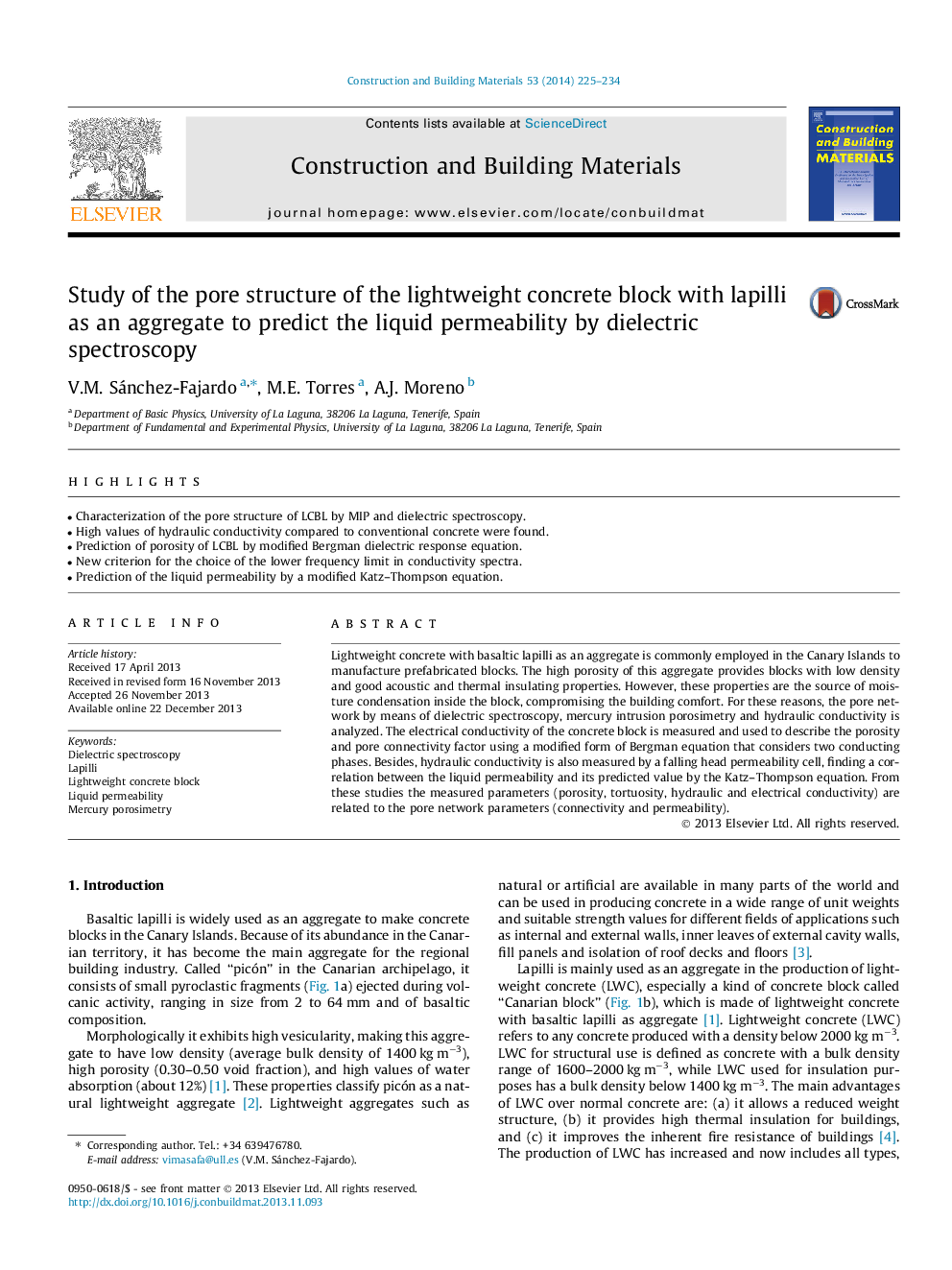| Article ID | Journal | Published Year | Pages | File Type |
|---|---|---|---|---|
| 257748 | Construction and Building Materials | 2014 | 10 Pages |
•Characterization of the pore structure of LCBL by MIP and dielectric spectroscopy.•High values of hydraulic conductivity compared to conventional concrete were found.•Prediction of porosity of LCBL by modified Bergman dielectric response equation.•New criterion for the choice of the lower frequency limit in conductivity spectra.•Prediction of the liquid permeability by a modified Katz–Thompson equation.
Lightweight concrete with basaltic lapilli as an aggregate is commonly employed in the Canary Islands to manufacture prefabricated blocks. The high porosity of this aggregate provides blocks with low density and good acoustic and thermal insulating properties. However, these properties are the source of moisture condensation inside the block, compromising the building comfort. For these reasons, the pore network by means of dielectric spectroscopy, mercury intrusion porosimetry and hydraulic conductivity is analyzed. The electrical conductivity of the concrete block is measured and used to describe the porosity and pore connectivity factor using a modified form of Bergman equation that considers two conducting phases. Besides, hydraulic conductivity is also measured by a falling head permeability cell, finding a correlation between the liquid permeability and its predicted value by the Katz–Thompson equation. From these studies the measured parameters (porosity, tortuosity, hydraulic and electrical conductivity) are related to the pore network parameters (connectivity and permeability).
